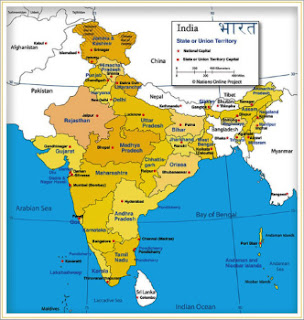India, a subcontinent renowned for its rich
cultural mosaic, is home to a multitude of languages. While the official
languages like Hindi and English often dominate the spotlight, the tribal
languages of India represent a treasure trove of linguistic diversity and
cultural heritage. These languages, spoken by the country’s indigenous tribal
communities, are not just means of communication but are integral to preserving
the unique traditions, stories, and identities of these groups.
India’s tribal languages
encompass a vast array of linguistic families, each with its unique
characteristics. The linguistic landscape is incredibly diverse, reflecting the
geographical and cultural diversity of the country. For instance, the Dravidian
languages, primarily spoken in southern India, include languages like Toda and
Irula, which are used by indigenous communities in the Nilgiri Hills.
One of the most striking features of tribal
languages is their oral tradition. Many tribal languages do not have a
standardized script and are passed down orally through generations. This oral
transmission includes not only everyday communication but also folklore,
rituals, and songs that embody the collective memory and identity of the tribe.
Tribal languages are deeply intertwined with the
cultural practices of their communities. They are the vessels through which
traditional knowledge, including medicinal practices, agricultural techniques,
and spiritual beliefs, is conveyed. For instance, the Bhili language spoken by
the Bhil tribe in western India is rich in folk tales and oral histories that
offer insights into the tribe’s worldview and social norms.
Moreover, tribal
languages often possess unique linguistic features and structures that can
provide valuable information about human cognition and language evolution.
Linguists studying these languages contribute to our understanding of language
typology and the ways in which different languages address common human needs
and experiences.
Despite their cultural richness, many tribal
languages face significant threats. Urbanization, globalization, and the
dominance of major languages have led to the erosion of these languages.
Younger generations are increasingly abandoning their native languages in favor
of more widely spoken ones, which they perceive as offering better economic
opportunities.
Efforts to preserve and revitalize tribal languages
are ongoing but face considerable challenges. Organizations and researchers are
working to document these languages, create educational materials, and develop
language preservation programs. For example, the Odisha Tribal Language
Institute is actively involved in the documentation and promotion of tribal
languages in Odisha, helping to ensure that they remain a living part of the
state’s cultural fabric.
Community-driven initiatives also play a crucial role.
Many tribal
communities are taking proactive steps to keep their languages alive, including
integrating language education into local schools and creating media content in
their native tongues. These grassroots efforts are vital in ensuring that
tribal languages continue to thrive and evolve.Indian tribal languages are a
testament to the country’s rich linguistic heritage. They embody the unique
cultural identities of their speakers and offer invaluable insights into human
linguistic diversity. As India continues to modernize and urbanize, it is
crucial to recognize and support the preservation of these languages. By
valuing and nurturing tribal languages, we not only honor the rich traditions
of India’s indigenous communities but also enrich the global tapestry of human
language and culture.
